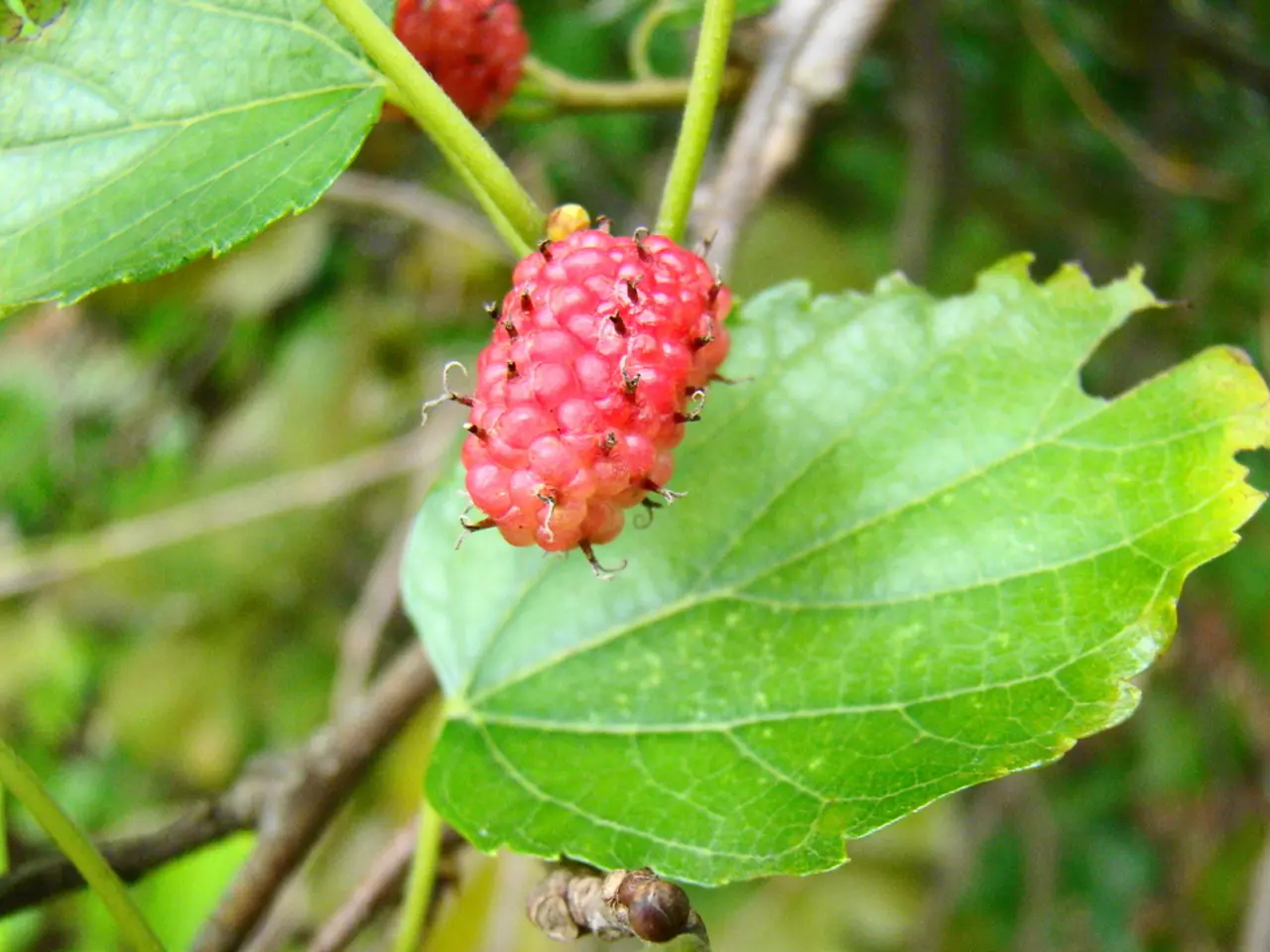Root Rot Destruction in Raspberry Plants Caused by Phytophthora Species
In the world of raspberry cultivation, two varieties - Cumberland and Munger - have been identified as susceptible to Phytophthora root rot, a soil-borne disease that can significantly impact plant health. This condition is caused by several Phytophthora species, including P. megasperma, P. cryptogea, P. citriocola, and P. cactorum, but recent findings expand the known diversity of these pathogens.
Research has identified two additional species: Phytophthora cinnamomi and Phytophthora plurivora. Phytophthora cinnamomi, a major root pathogen, is known for causing Phytophthora dieback or cinnamon fungus, affecting a wide range of plants in diverse ecosystems. On the other hand, Phytophthora plurivora, while not as extensively described, is noted as another common species implicated in root diseases.
To combat Phytophthora root rot, it is crucial to prevent water from collecting around plants. This simple practice can help reduce the incidence and severity of the disease. One soil-applied fungicide, Ridomil Gold, can partially control Phytophthora root rot of raspberry. However, for the best results, it is recommended to follow other disease management practices in addition to using Ridomil Gold.
Site modification, such as the placement of tile drains and growing plants on raised beds, can also control Phytophthora root rot of raspberry. Planting into an uninfested site without previous fruit crops reduces the risk of introducing Phytophthora fungi.
It is essential to note that symptomless nursery plants may be a means of initially introducing Phytophthora fungi into a grower's field. To minimise this risk, tissue culture techniques in a laboratory and greenhouse can produce plants with little risk of introducing Phytophthora fungi.
Red raspberries and some hybrids are most seriously affected by Phytophthora root rot. Fortunately, some cultivars, such as Bristol, Dundee, and Jewel, are moderately to highly resistant to this disease.
For the most current fungicide use recommendations, growers are referred to Bulletin 506, Midwest Fruit Pest Management Guide. This fact sheet, originally published in 2008, provides valuable information on Phytophthora root rot in raspberries, much of which was provided by Dr. Wayne Wilcox from Cornell University.
[1] https://www.nps.gov/subjects/diseases/phytophthora-dieback.htm [2] https://www.dpi.nsw.gov.au/climate-and-emergency-services/biosecurity/pests/pests-diseases-and-weeds/phytophthora-dieback [3] https://www.ncbi.nlm.nih.gov/books/NBK182898/
- In the realm of raspberry cultivation, recent science has uncovered two additional Phytophthora species - Phytophthora cinnamomi and Phytophthora plurivora - that can potentially impact the health of crops, as they are known to cause diseases in soil.
- Pest management plays a vital role in the cultivation of raspberries, particularly in controlling Phytophthora root rot, a disease that affects not only the Cumberland and Munger varieties but also other susceptible crops.
- To maintain optimal health-and-wellness for raspberry plants and to minimize the impact of Phytophthora root rot, it's crucial to employ integrated pest management strategies, including the use of scientific resources such as the Midwest Fruit Pest Management Guide.




